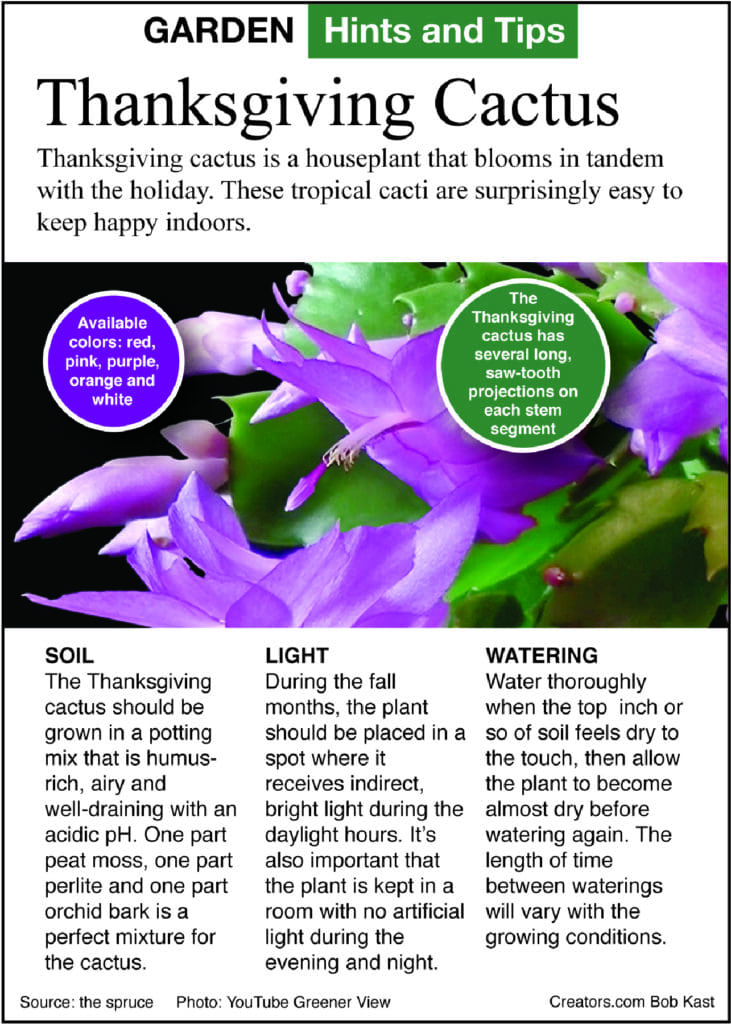Search Posts
Recent Posts
- Outdoors in RI: Help keep recreation areas clean. Invasive Milfoil, trash. 2A update – Jeff Gross July 26, 2024
- Real Estate in RI: Highest-ever sale in Queen’s Grant, EG $1.25M, by Residential Properties July 26, 2024
- Homeless in RI: Gov. Newsom issues Executive Order. Remove California’s encampments. July 26, 2024
- Let the games begin. XXXIII Summer Olympics – John Cardullo July 26, 2024
- GriefSPEAK: What would you do? – Mari Dias Nardolillo July 26, 2024
Categories
Subscribe!
Thanks for subscribing! Please check your email for further instructions.

A Greener View: Your Thanksgiving, Christmas Cactus – Jeff Rugg
You will see poinsettias everywhere this time of year, and if you are tired of them you might want to try the easy-to-grow Thanksgiving cactus. You probably have heard them be called Christmas cacti. There are three species of similar tropical cacti. One blooms in the fall, one in the winter and one in the spring. They are named after the three holidays of Thanksgiving, Christmas and Easter.
The Thanksgiving cactus is actually the most common one sold, even for Christmas. To tell all of them apart, look at the flattened stem. It is not a leaf, but that’s what it looks like. These cacti do not have any leaves. The Thanksgiving cactus has several long saw-tooth projections on the edge of each stem segment. The true Christmas cactus usually has four rounded bumps on each stem segment. The Easter cactus has four to six wavy scallops on the edge. On all the species, the ends of the stems can have some small cactus spines.
The flowers of most Thanksgiving cacti have yellow pollen, and the flowers of most Christmas cacti have pink pollen. The flowers of Easter cacti are tube shaped, so they look different than the other two. They are not true cacti and should not be allowed to dry out like a typical desert cactus. In nature, they are like many bromeliads because they are epiphytic plants that grow on trees and other plants in South America. Epiphytes grow along branches without taking any nutrition from their host plant.

They make great houseplants because they are very long-lived and very disease and insect resistant. They do well with minimal care and even seem to bloom better if left to become root-bound in the pot. The best way to buy them is when they are covered in buds with a few full flowers. If too many flowers are almost done blooming, you won’t get much of a display. Flowers are formed on the ends of the branches where the main vein hits the end of the line. Sometimes there is only a single bud and sometimes there is a cluster of several. The flowers have a series of petals that form a tube about three inches long. They can be red, pink, purple, orange and white. Easter cacti have a more limited selection of colors in the red and pink range.
Cool fall temperatures and shortening day lengths in the fall will induce the Thanksgiving and Christmas cacti into bloom. The Thanksgiving cactus will bloom between November and the New Year. Christmas cacti bloom December through March. If these cacti are grown in a warm room (above 65 degrees) that has plenty of evening lighting, they may not bloom. Give them about six weeks of being moved to a cool, dark room or closet each evening and they will set buds. Kept in a room that is always around 55 degrees, they may bloom without a short day length. Easter cacti will bloom if they receive cool temperatures under 65 and the lighting does not matter.
___
To read more columns on gardening by Jeff, go to: https://rinewstoday.com/?s=jeff+rugg

Email questions to Jeff Rugg at [email protected]. To find out more about Jeff Rugg and read features by other Creators Syndicate writers and cartoonists, visit the Creators Syndicate website at www.creators.com. COPYRIGHT 2020 JEFF RUGG – DISTRIBUTED BY CREATORS SYNDICATE
Email questions to Jeff Rugg at [email protected]. To find out more about Jeff Rugg and read features by other Creators Syndicate writers and cartoonists, visit the Creators Syndicate website at www.creators.com. – COPYRIGHT 2021 JEFF RUGG – DISTRIBUTED BY CREATORS
